The 10 Most Populated Countries In Europe

- Europe has a population for more than 747 million people.
- Russia is the most populous country in Europe.
- The largest cities in each of the ten most populous European countries are also the capital cities of those countries.
- Europe's population growth rate of just 0.06% is the lowest of all the world's inhabited continents.
In 2020, the population of Europe was more than 747 million people. The continent’s population is not projected to increase much in the future. In fact, Europe’s rate of population growth is just 0.06%, which is the lowest among all of the world’s six inhabited continents. Nevertheless, the continent is home to some very populous countries. Here are some details about Europe’s ten most populous countries.
- Russia - 144,373,540
- Germany - 83,132,800
- France - 67,059,890
- United Kingdom - 66,834,400
- Italy - 60,297,400
- Spain - 47,076,780
- Ukraine - 44,385,150
- Poland - 37,970,870
- Romania - 19,356,540
- The Netherlands - 17,332,850
1. Russia - 144,373,540
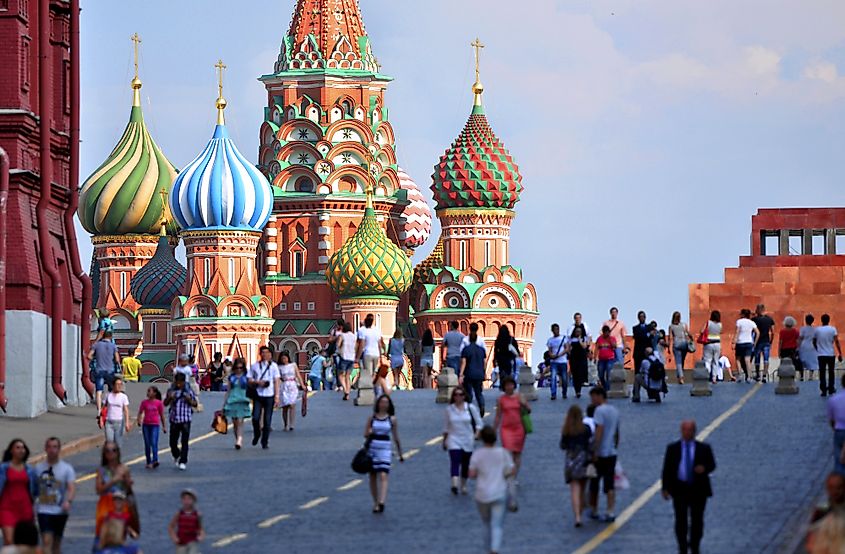
Russia is the most populous country in Europe. It has a total population of more than 144 million, most of which (73.7%) is urban. Russia’s population density is 23 people per square mile (9 per sq. km), making it the least densely populated country of the top ten most populous countries in Europe. The country’s biggest population center is its capital, Moscow, with a population of more than 12 million people, which also makes it the second most populous city in Europe. Other large population centers in Russia include the cities of St. Petersburg, Kazan, Nizhniy Novgorod, Samara, Rostov-on-Don, and Voronezh.
2. Germany - 83,132,800
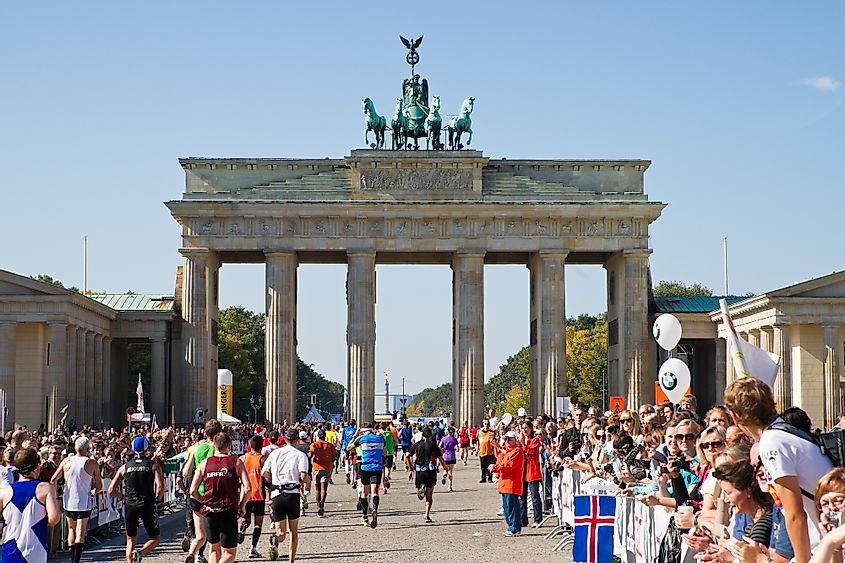
Germany has a population of over 83 million. Just over three quarters of the country’s population is urban. Germany’s population density is 623 people per square mile (240 per sq. km). The country’s biggest city is Berlin, the capital, which has a population of more than 3.5 million, making it the 9th most populous city in Europe. Other large German cities include Hamburg, Munich, and Cologne.
3. France - 67,059,890

France is home to more than 67 million people. The urban population of the country represents 82% of the total populace. France’s population density is 309 people per square mile (119 per sq. km). The country’s largest city is its capital, Paris, which is home to more than 11 million people, making it the third most populous city in Europe. Other large French cities include Lyon, Marseille, and Lille.
4. United Kingdom - 66,834,400
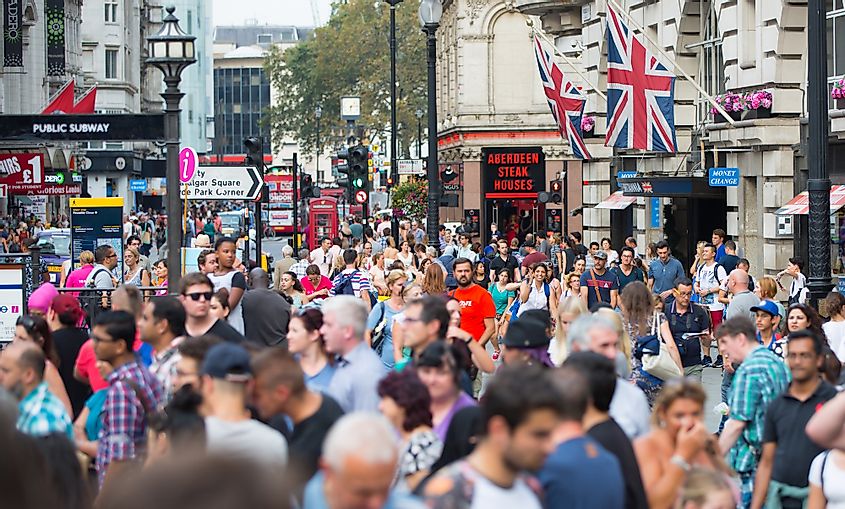
The United Kingdom of Great Britain and Northern Ireland hosts a population of more than 66 million people. The vast majority of these people, around 56 million, live in the U.K. country of England. The U.K. has a population density of 727 people per square mile (281 per sq. km). Its urban population is 83% of the total. London, the capital of the U.K., is also the country’s largest city, and is home to 9.3 million people, making it the fourth largest city in Europe. Other large British cities include Manchester, Birmingham, Leeds, and Glasgow.
5. Italy - 60,297,400

Italy is populated by more than 60 million people, of which 69% live in cities. The country’s population density is 532 people per square mile (206 per sq. km). Italy’s population is currently in decline, as its growth rate is -0.15% per year. Rome, Italy’s capital, is also the country’s largest urban center, with more than 4 million residents, which makes the center of the ancient Roman Empire Europe’s 8th largest city. Other large Italian cities include Milan, Naples, and Turin.
6. Spain - 47,076,780
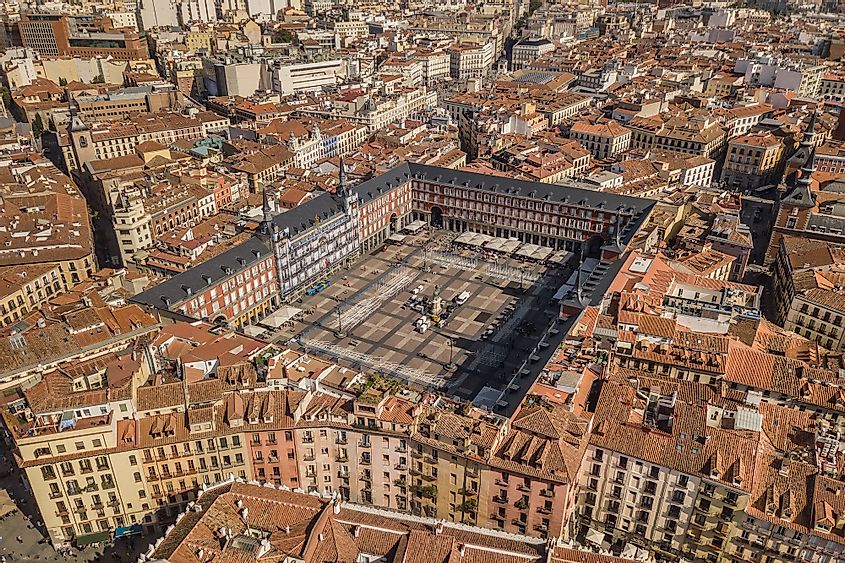
Spain is home to a population of just over 47 million. The country’s population density is 243 people per square mile (94 per sq. km). Madrid, which is Spain’s capital, is also its largest city, with 6.6 million residents. Spain’s other major metropolis is Barcelona, the capital of the country’s Catalonia region. The urban population makes up 80% of the country’s total populace.
7. Ukraine - 44,385,150
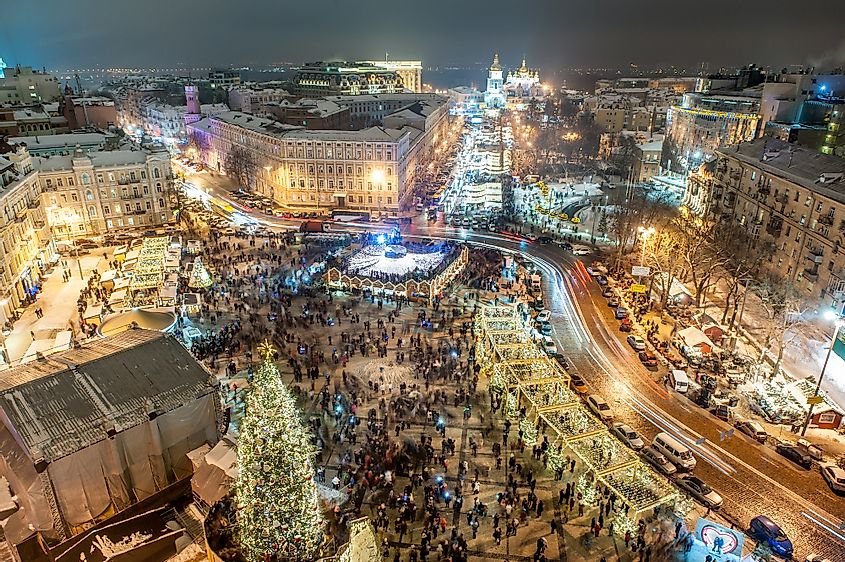
Ukraine’s population numbers over 44 million people. The former Soviet republic’s population density is 196 people per square mile (75 per sq. km). Ukraine’s population has been rapidly declining since the collapse of the Soviet Union. In 1990, the country’s population stood at approximately 51 million. Thus, the country has lost roughly 7 million people in the last three decades. Kiev, Ukraine’s capital, is also the country’s largest city, with nearly 3 million residents. Kharkiv, located in eastern Ukraine, is the only other city in the country with a population in excess of one million.
8. Poland - 37,970,870
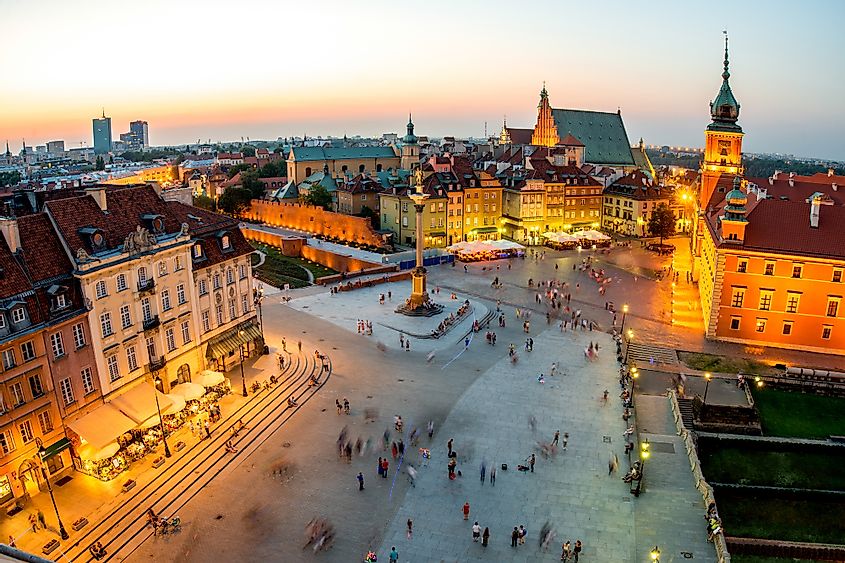
Poland has a population of slightly less than 38 million people. The country’s urban population is 60%. Poland’s population density is 320 per square mile (124 per sq. km). The country’s population is currently on the decline, with a growth rate of -0.11%. Warsaw, the Polish capital, is also the country’s largest city, boasting 1.78 million residents. Poland’s other major cities, such as Lodz and Krakow, all have populations numbering less than one million.
9. Romania - 19,356,540
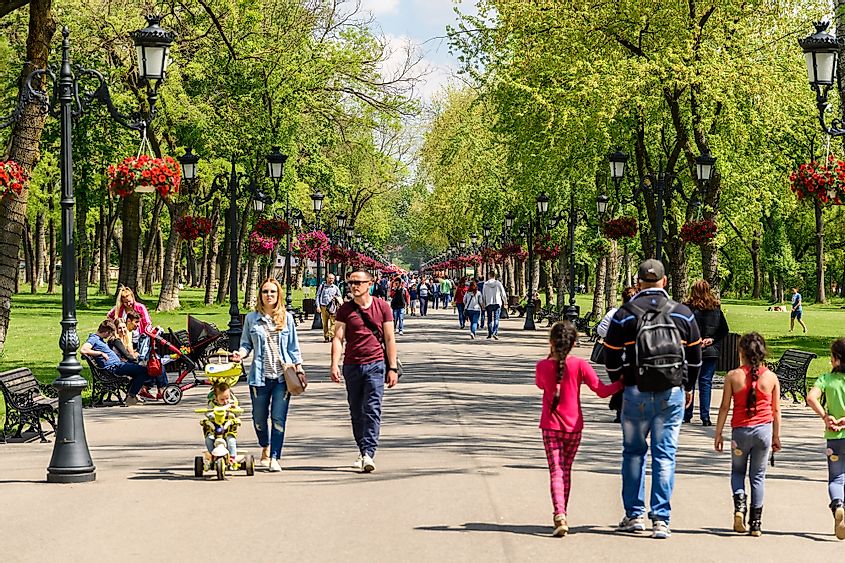
Just over 19 million people live in Romania. The country’s urban population is 55% of the total, which makes Romania the least urban of the top ten most populous European countries. Romania’s population density is 216 people per square mile (84 per sq. km). The country’s capital, Bucharest, is also its largest city, and has a population of 1.8 million. All of Romania’s other major cities have less than one million residents.
10. The Netherlands - 17,332,850
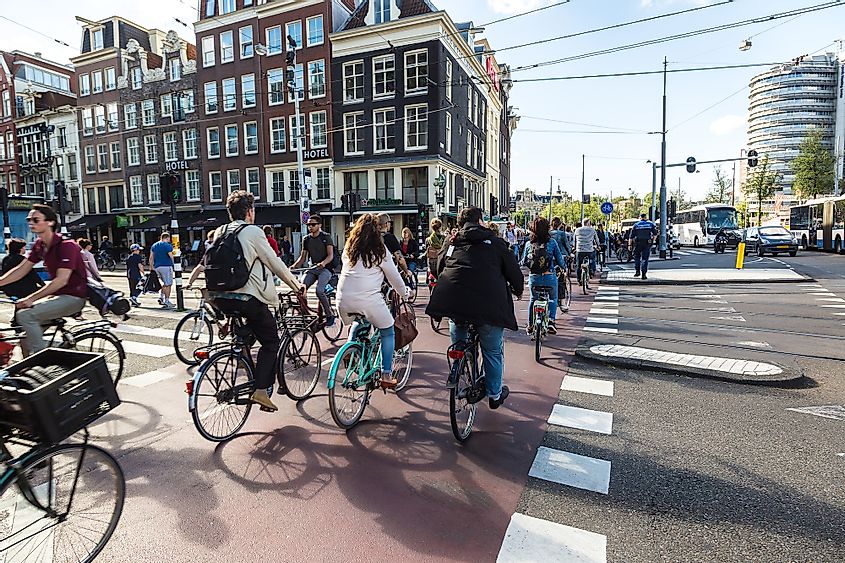
Rounding out our top ten list of Europe’s most populous countries is the Netherlands, which is home to more than 17 million people. The Dutch population is 92% urban, making the Netherlands the most urbanized country on our list of Europe’s ten most populous countries. The population density of the Netherlands is 1,316 people per square mile (508 per sq. km), which means that the country has the highest density of Europe’s ten most populous countries. The largest city in the Netherlands is its capital, Amsterdam, with a population of just over 872,000. Other major Dutch cities include Rotterdam and The Hague.
Unranked Transcontinental Countries
You will notice that our list of Europe’s most populous countries does not rank Turkey, Kazakhstan, or Azerbaijan. If they were ranked, they would be the 2nd, 10th, and 16th most populous countries in Europe respectively. They are not ranked because most of their populations technically do not live in Europe, but in Asia. All three of the aforementioned countries have territory in both Europe and Asia, but the bulk of their populations reside in territory belonging to the Asian continent.
Europe’s Population In The Future
It is generally known that countries with advanced, industrialized economies see significantly less population growth than countries in the developing world. It is no surprise, then, that the countries of Europe have mostly negligible population growth rates. Indeed, some countries in Europe even have negative growth rates. Hence, it is reasonable to assume that Europe’s overall population will not change significantly in the next few years, or even decades.
The 20 Most Populated Countries In Europe
| Rank | Country | Population |
|---|---|---|
| 1 | Russia | 144,373,540 |
| - | Turkey | 83,429,620 |
| 2 | Germany | 83,132,800 |
| 3 | France | 67,059,890 |
| 4 | United Kingdom | 66,834,400 |
| 5 | Italy | 60,297,400 |
| 6 | Spain | 47,076,780 |
| 7 | Ukraine | 44,385,150 |
| 8 | Poland | 37,970,870 |
| 9 | Romania | 19,356,540 |
| - | Kazakhstan | 18,513,930 |
| 10 | Netherlands | 17,332,850 |
| 11 | Belgium | 11,484,060 |
| 12 | Greece | 10,716,320 |
| 13 | Czech Republic | 10,669,710 |
| 14 | Sweden | 10,285,450 |
| 15 | Portugal | 10,269,420 |
| - | Azerbaijan | 10,023,320 |
| 16 | Hungary | 9,769,950 |
| 17 | Belarus | 9,466,860 |
| 18 | Austria | 8,877,070 |
| 19 | Switzerland | 8,574,830 |
| 20 | Bulgaria | 6,975,760 |







